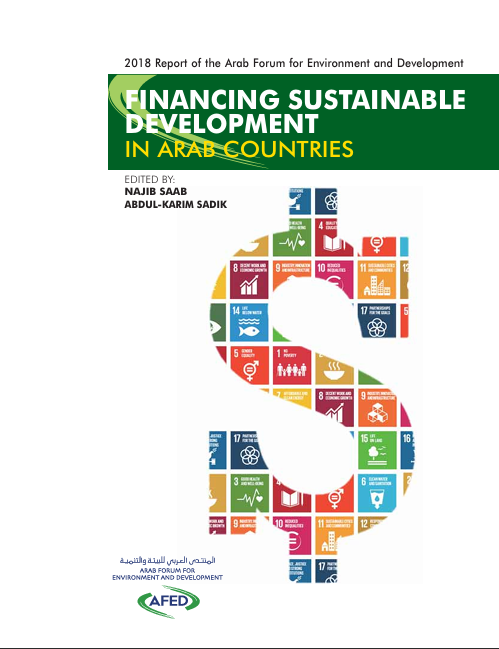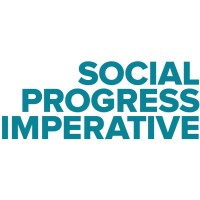Identifies financing necessities and mechanisms for sustainable development. It strongly advocates reversing natural resource degradation and adopting sustainable policies. Notably, the report highlights the necessity of a conducive legal environment to attract investments, the critical role of honoring international commitments, and the value of boosting regional cooperation to address financing challenges.
Significantly, the report emphasizes the need to mobilize private finance for Sustainable Development Goals (SDGs) through a favorable business environment, effective governance, and political stability. It also outlines AFED’s essential role in addressing environmental challenges, proposing viable solutions, and financing sustainable development changes.
The 2018 Report of the Arab Forum for Environment and Development on Financing Sustainable Development in Arab Countries offers several key findings and recommendations regarding financing sustainable development in the Arab region:
- Financing Needs and Gaps: The report identifies the Arab countries’ significant funding needs for sustainable development and highlights the gaps in required funding.
- Enhancement of Financing Sources: It explores financing options for the Arab region’s sustainable development initiatives, examining how different funding sources can be enhanced.
- Importance of Transparency and Accountability: The report highlights the need for transparent and accountable financing approaches for sustainable development. It stresses the importance of good governance, adequate fiscal policies, and sustainable investments.
- Combatting Illicit Financial Flows: Addressing illicit finance flows, money laundering, and tax evasion is vital for sustainable development financing. Combating these practices, including corruption, is crucial in generating resources for sustainable development goals.
- Role of International Cooperation: The report urges Arab nations to collaborate for increased research and sustainable development funding, citing Egypt, Jordan, and Saudi Arabia as examples.
Overview
Chapter 1
Initiates the review of sustainable development financing in the Arab region, thoroughly exploring economic disparities, revenue sources, development challenges, and outlook. Significantly guided by the Addis Ababa Action Agenda, it also considers the financing needs in areas impacting SDGs – conflicts, poverty, health, education, water, sanitation, and energy infrastructure.
Reliant on ESCWA’s recent flagship reports such as “Rethinking Fiscal Policy for the Arab Region” (2017), “Arab Region Progress in Sustainable Energy” (2017), and “Illicit Financial Flows in the Arab Region” (2018), the analysis in Chapter 1 is comprehensive. Additionally, it considers insights from the Arab Financing for Development Scorecard from “The State of Financing Development in the Arab Region” (2018).
Finally, the chapter concludes by discussing the potential for raising fiscal space in the regional context to address the challenges of financing sustainable development at the scale demanded by Agenda 2030. It underscores the need for a holistic approach to funding sustainable development in the Arab region, considering the diverse economic landscapes and development priorities across countries.
Chapter 2
Delves into how Arab development institutions support sustainable initiatives in the region. Firstly, it comprehensively explains their contributions and highlights the challenges in funding sustainable development efforts in the Arab region. Moreover, it emphasizes the significance of these institutions in steadily progressing towards the Sustainable Development Goals and fostering inclusive, sustainable development in Arab countries. Here is a summary of the key points discussed.
- Role and Mandate: Explores how Arab development institutions finance sustainable projects and programs, providing financial resources, technical aid, and capacity-building support to promote sustainable development in Arab countries.
- Challenges and Opportunities: Covers the challenges and opportunities Arab development institutions face in financing sustainable development, including limited resources, stakeholder coordination, and the need for innovative financing.
- Case Studies and Best Practices: Includes case studies demonstrating how Arab development institutions have successfully mobilized resources for sustainable programs in infrastructure, education, healthcare, and environmental conservation.
- Recommendations: Ends with suggestions for enhancing Arab development institutions’ role in sustainable development finance. This includes improved coordination, partnerships with the private sector and civil society, and innovative financing models for regional development issues.
Chapter 3
Explores novel and creative financing mechanisms to support sustainable development in Arab countries. It importantly provides insights into the role of innovative financing in advancing sustainable development goals in Arab countries. This exploration showcases how creative financial mechanisms can effectively drive progress towards achieving inclusive and sustainable development outcomes in the region.
- Introduction to Innovative Financing: Discusses innovative financing to fill the financing gaps for sustainable development in the Arab region and how it can supplement traditional funding sources to mobilize more resources for development projects.
- Types of Innovative Financing: Examines innovative financing mechanisms like impact investing, green bonds, etc. These aim to attract private investments and philanthropic funds for sustainable development goals.
- Case Studies and Examples: Includes case studies of innovative financing in Arab countries, demonstrating its effectiveness in funding projects like renewable energy, healthcare, education, and infrastructure development for sustainable development.
- Benefits and Challenges: Innovative financing approaches raise questions about benefits and challenges. They offer the potential for increased investment, better project sustainability, and social impact but also present issues like risk management, scalability, and regulatory frameworks.
- Recommendations and Conclusions: Ends with recommendations for innovative financing to promote sustainable development in the Arab region. These include enhancing knowledge of creative funding, fostering stakeholder partnerships, and creating an environment for implementing these solutions.
Chapter 4
Outlines the essential financing requirements for sustainable development in Arab countries, guiding and fostering a supportive environment. Notably, it focuses on several key aspects. These include policy frameworks, governance structures, and capacity-building initiatives. In addition, it highlights the role of public-private partnerships and the importance of monitoring mechanisms.
- Introduction to Enabling Conditions: Presents enabling conditions as key to finance sustainable development goals in the Arab region. It highlights the role of supportive policies, regulatory frameworks, and institutional capacities in attracting investments and resources for sustainable development.
- Policy Frameworks and Governance: Discusses promoting sustainable development financing through effective policy and governance. It may cover transparency, accountability, anti-corruption, and regulatory reforms, which build investor confidence and ensure resource allocation.
- Capacity Building and Institutional Strengthening: Stresses the importance of capacity-building and institutional strengthening in Arab countries for practical, sustainable development projects. It might discuss the need for training, knowledge sharing, and technical assistance to build the necessary skills and expertise.
- Public-Private Partnerships: Examines how public-private partnerships (PPPs) in the Arab region can utilize private sector resources for infrastructure development, economic growth, and sustainable outcomes.
- Monitoring and Evaluation: Reviews the significance of robust frameworks and tools for monitoring, data collection, and evaluating the effectiveness of sustainable development financing initiatives in achieving sustainability goals.
Chapter 5
Emphasizes the importance of sustainable energy investments in Arab countries for sustainable development. It outlines the need to tackle challenges, leverage opportunities, enact supportive policies, and encourage technological innovations. Furthermore, it demonstrates best practices and aims to guide stakeholders in accelerating the transition to a more sustainable and resilient energy sector in the region.
- Introduction to Sustainable Energy: Underscores the importance of sustainable energy investments for sustainable development in the Arab region, focusing on renewable energy, energy efficiency, and clean technologies as key drivers of environmental sustainability, economic growth, and energy security.
- Challenges and Opportunities: Explores the challenges and benefits of sustainable energy investments in Arab countries, covering topics like energy access, affordability, climate change mitigation, transition to low-carbon economies, job creation, innovation, and energy independence.
- Policy and Regulatory Frameworks: Examines the crucial role of supportive policies and regulations in promoting sustainable energy investments, including government incentives, renewable energy goals, carbon pricing, and regulatory reforms to encourage private sector investments in clean energy technologies.
- Technological Innovations: Discusses how tech innovations and sustainable energy advancements reshape the Arab energy landscape. It covers the role of innovation, research, and development in progressing towards sustainable energy solutions and meeting energy transition goals.
- Case Studies and Best Practices: Includes examples of successful sustainable energy projects and initiatives in the Arab region. These examples illustrate how investments in renewable energy, energy efficiency, and sustainable infrastructure have diversified energy sources, reduced emissions, and fostered economic development in Arab countries.
Therefore. Furthermore. Nonetheless. Nevertheless. Moreover. Therefore. Furthermore. Nonetheless. Nevertheless. Moreover. Therefore. Furthermore. Nonetheless. Nevertheless. Moreover.




